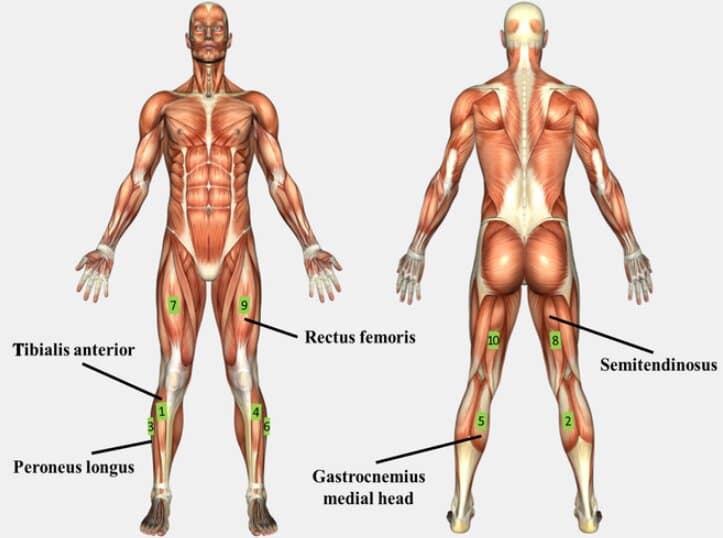Researchers at Tohoku University have proposed an algorithm based on 10 EMG sensors attached to human lower limbs to estimate ground reaction force and movements of muscles.

The electromyography (EMG) sensors on legs predict movements, offering an alternative to camera-based prediction. However, there is still a disparity between muscle states and movements. Ground reaction force must be estimated from recorded muscle states to predict movements accurately, which is challenging due to complex nonlinear mapping.
Researchers at Tohoku University have proposed an algorithm to estimate ground reaction force and moments of muscles based on 10 EMG sensors attached to human lower limbs. Motion prediction is crucial in the animal kingdom for both hunter and prey and in our daily lives, such as in sports. As a defender in basketball, predicting the direction of the offender’s breakthrough is essential for an appropriate and timely reaction.
The study states that predicting force-driven motion, such as the initial movement from a static pose, can only be possible with force-related measurement. The researchers suggested that incorporating dynamics information and kinematics information can improve motion prediction systems, particularly for static poses. Pure muscle activations without prior motions limit the usefulness of kinematic information, such as current and past position and pose, for motion prediction.
Two experiments demonstrated the feasibility of predicting ground reaction force and moment through EMG sensing. Participants repeated posture control motion in the first experiment, where past postures were crucial for prediction. In the second experiment, subjects performed a stepping movement, where past kinematics provided little information on future movement states. The study states that an extended short-term memory network can predict the future movement of subjects in both experiments. The current kinematics-based algorithm only produced comparable results in the first experiment but could have been better in the second experiment.
The researchers suggested that this method could be useful for other biomechanical research that cannot use a force plate. They plan to expand the proposed method to integrate with motion performance, motion discrimination information, and time-scale considered motion synergy information for rehabilitation purposes in the future.
Reference : Sei-ichi Sakamoto et al, Ground Reaction Force and Moment Estimation through EMG Sensing Using Long Short-Term Memory Network during Posture Coordination, Cyborg and Bionic Systems (2023). DOI: 10.34133/cbsystems.0016








